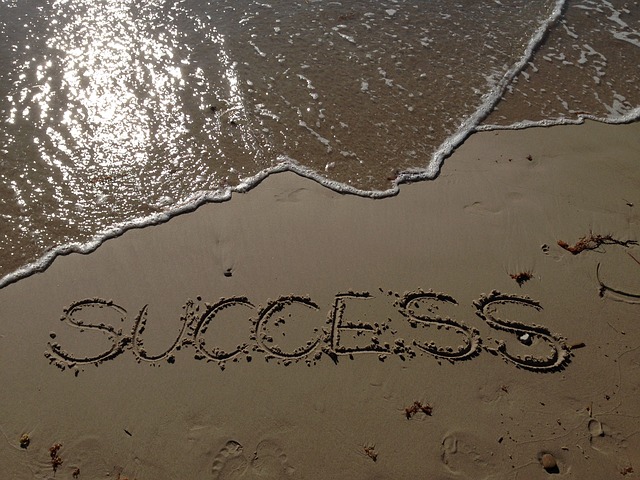
Not sure what graduate schools are looking for in a statement of purpose? Looking at successful graduate school statement of purpose samples can help! In this guide, we’ll orient you to what makes a great statement of purpose or letter of intent for graduate school. Then we’ll provide you with four successful statement of purpose examples from our graduate school experts. We’ll also provide analysis of what makes them successful. Finally, we’ll direct you to even more helpful examples that you can find online!
The Graduate School Statement of Purpose: An Overview
A statement of purpose (also called a letter of intent or a research statement) introduces your interests and experience to the admissions committee. For research-focused programs, like most PhDs and many master’s degrees, your statement of purpose will focus primarily on your past research experience and plans. For more professionally-focused graduate programs, your statement of purpose will primarily discuss how your pursuit of this professional program relates to your past experiences, and how you will use the skills from the program in your future career.
A statement of purpose for grad school is also where you sell the admissions committee on why you belong in their program specifically. Why do you fit there, and how does what they offer fit your interests?

What’s in a Great Grad School Statement of Purpose?
Here are the essential elements of a strong graduate school statement of purpose:
Clear Articulation of Goals and Interests
A strong statement of purpose will clearly and specifically lay out your goals in undertaking the program and what you hope to accomplish with the degree. Again, for a research-focused program, this will focus primarily on the research project(s) you want to undertake while you are there. For a more professional program, discuss what interests you within the professional field and what skills/knowledge you hope to gain through the program.
Quick side note: we've created the world's leading online GRE prep program that adapts to you and your strengths and weaknesses. Not sure what to study? Confused by how to improve your score? We give you minute by minute guide.
You don't NEED a prep program to get a great GRE score. But we believe PrepScholar is the best GRE prep program available right now, especially if you find it hard to organize your study schedule and don't know what to study.
Click here to learn how you can improve your GRE score by 7 points, guaranteed.
You should be as specific as possible in discussing what interests you. Use examples of particular phenomena, tools, or situations that you find exciting. If you are vague or say that everything in the field interests you, you run the risk of seeming unfocused or not actually that passionate.
Don’t worry that being too specific will box you into a particular research area or subfield during your entire tenure in graduate school. Your program understands that interests change—they won’t be pulling out your research statement to cross-reference with your dissertation proposal!
Evidence of Past Experience and Success
A great graduate school statement of purpose will also show programs that you have already been successful. They want applicants that will be able to follow through on their research/professional plans!
To this end, you’ll need to provide evidence of how your background qualifies you to pursue this program and your specific interests in the field. You’ll probably discuss your undergraduate studies and any professional experience you have. But be sure to draw on specific, vivid examples. You might draw on your thesis, major projects you’ve worked on, papers you have written/published, presentations you’ve given, mentors you’ve worked with, and so on. This gives admissions committees concrete evidence that you are qualified to undertake graduate study!

Interest and Fit With the Program
The third essential ingredient to a great statement of purpose is to clearly lay out why you and the program are a good fit. You should be able to identify both specific reasons why your work fits with the program and why the program suits your work/interests! Are there particular professors you’d like to work with? Does the department have a strong tradition in a certain methodology or theory you’re interested in? Is there a particular facet to the curriculum that you’d like to experience?
Showing that you and the program are a match shows that you chose the program thoughtfully and have genuine interest in it. Programs want to admit students who aren’t just passionate about the field. They want students who are genuinely enthused about their specific program and positioned to get the most out of what they have to offer.
Strong Writing
The final essential piece of a strong statement of purpose or letter of intent is strong writing. Writing skills are important for all graduate programs. You’ll need to demonstrate that you can clearly and effectively communicate your ideas in a way that flows logically. Additionally, you should show that you know how to write in a way that is descriptive but concise. A statement of purpose shouldn’t ever be longer than two pages, even without a hard word limit.
Admissions committees for humanities programs may be a little more focused on writing style than admissions officers for STEM programs. But even in quantitative and science-focused fields, written communication skills are an essential part of graduate school. So a strong statement of purpose will always be effectively written. You’ll see this in our statement of purpose for graduate school samples.
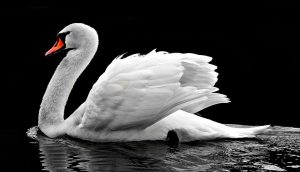
Real, Successful Statement of Purpose Samples
In this section, we’ll present four successful graduate school statement of purpose examples from our graduate school experts, along with a brief commentary on each statement. These statements come from a diverse selection of program types to show you how the core essentials of a statement of purpose can be implemented differently for different fields.
Note: identifying information for these statements have been changed—except for example four, which is my statement.
Statement of Purpose Sample One: Japanese Studies MA

This statement of purpose is notable for its great use of space and its vivid descriptions. The author is able to cram a lot into about a page. She discusses how she came to her two primary research interests (and how they are connected). She integrates this discussion of her interests with information on her past experiences and qualifications for pursuing the course of study. Finally, she includes details on her goals in pursuing the program and components of the program that interest her. Her examples are specific and fleshed-out. There’s a lot very cleverly included in a small amount of page space!
Additionally, the language is very vivid. Phrases like “evocative and visceral” and “steadily unraveling,” are eye-catching and intriguing. They demonstrate that she has the writing skills necessary to pursue both graduate study and her interest in translation.
Statement of Purpose Sample Two: Music MM

This sample is fairly long, although at 12 point Times New Roman it’s under two pages single-spaced. The length of this statement is partially due to the somewhat expansive nature of the prompt, which asks what role music has played in the applicant’s life “to date.” This invites applicants to speak more about experiences further in the past (in the childhood and teen years) than is typical for a statement of purpose. Given that this is for a master’s degree in music, this is logical; musical study is typically something that is undertaken at a fairly young age.
This statement does an excellent job describing the student’s past experiences with music in great detail. The descriptions of the student’s past compositions and experiences performing new music are particularly vivid and intriguing.
This statement also lays out and elaborates on specific goals the student hopes to pursue through the program, as well as features particular to the program that interest the student (like particular professors).

Statement of Purpose Sample Three: Economics PhD

One of the first things you’ll likely notice about this statement is that it’s a little on the longer side. However, at 12 point Times New Roman font and single-spaced, it still comes in under 2 pages (excluding references). It makes sense for a PhD statement of purpose sample to be longer than a master’s degree statement of purpose—there’s more to lay out in terms of research interests!
The writing style is fairly straightforward—there’s definitely a stronger focus on delivering content than flashy writing style. As Economics is a more quantitative-focused field, this is fine. But the writing is still well-organized, clear, and error-free.
The writer also gives numerous examples of their past work and experience, and shows off their knowledge of the field through references, which is a nice touch.
Statement of Purpose Sample Four: History of the Book MA

This is actually my statement of purpose. It was for a program that I got accepted to but did not end up attending, for a Master’s in the History of the Book. You’ll notice that the two essay prompts essentially asked us to split our statement of purpose into two parts: the first prompt asked about our research interests and goals, and the second prompt asked about our relevant experience and qualifications.
I’ll keep my comments on this graduate school statement of purpose sample brief because I’ll do a deep dive on it in the next section. But looking back at my statement of purpose, I do a good job outlining what within the field interests me and clearly laying out how my past experiences have qualified me for the program.
Obviously this statement did its job, since I was accepted to the program. However, if I were to improve this statement, I’d change the cliche beginning (“since I was a child”) and provide more specificity in what about the program interested me.
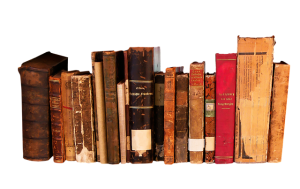
Deep Dive Analysis of a Sample Statement of Purpose for Graduate School
Next, we’ll do a paragraph by paragraph analysis of my statement, statement of purpose sample four. I’ll analyze its strengths and suggest ways I could shore up any weaknesses to make it even stronger.
Essay 1: Academic Interests
To refresh, here’s the first prompt: Please give a short statement that describes your academic interests, purpose, objectives and motivation in undertaking this postgraduate study. (max 3500 chars – approx. 500 words)
Want to improve your GRE score by 7 points? We have the industry's leading GRE prep program. Built by world-class instructors with 99th percentile GRE scores, the program learns your strengths and weaknesses through machine learning data science, then customizes your prep program to you so you get the most effective prep possible.
Try our 5-day full access trial for free:
Paragraph 1
Since I was a child, my favorite thing has always been a book. Not just for the stories and information they contain, although that is a large part of it. Mostly, I have been fascinated by the concept of book as object—a tangible item whose purpose is to relate intangible ideas and images. Bookbindings and jackets, different editions, the marginalia in a used book—all of these things become part of the individual book and its significance, and are worth study and consideration. Books and their equivalent forms—perfect bound, scrolled, stone tablets, papyrus—have long been an essential part of material culture and are also one of our most significant sources of information about the human historical past. Through both the literal object of the book, the words contained thereon, and its relationship to other books—forms of context, text and intertext—we are able to learn and hopefully manage layers of information with which we would otherwise have no familiarity.
First, the good: this paragraph does a good job introducing my academic interest in the book-as-object, and shows off pre-existing knowledge both of the study of material culture and literary theory. Additionally, the language is engaging: the juxtaposition of “tangible” and “intangible” in the beginning and phrases like “perfect bound, scrolled, stone tablets, papyrus” lend life to the writing and keep the reader engaged.
If I were to go back and improve this paragraph, first, I would absolutely change the first sentence to something less cliche than talking about my childhood. I might try something like “My love of books is a multifaceted thing. I don’t only love them for the stories and….” Second, I would chill out on the em dashes a little bit. Three sets in one paragraph is a little excessive. Finally, I might actually cut this paragraph down slightly to make more room word-wise later in the statement to discuss what specific things about the program interest me.
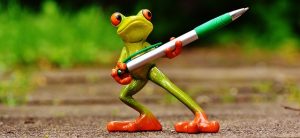
Paragraph 2
Furthermore, blogs, webcomics, digital archives, e-readers, and even social media sites like tumblr and Facebook have revolutionized the concept of the book by changing how we share and transmit ideas and information, just as the Gutenberg printing press revolutionized the book all those years ago in the fifteenth century. Once again there has been an explosion both in who can send out information and who can receive it.
This paragraph briefly and effectively introduces my other main academic interest: how new technology has changed the concept of the book-as-object. The tie-back to the printing press is a nice touch; it’s a vivid example that shows that I’m aware of important historical moments in book history.
Paragraph 3
I am deeply interested in the preservation of the physical book, as I think it is an important part of human history (not to mention a satisfying sensory experience for the reader). However I am also very concerned with the digitization and organization of information for the modern world such that the book, in all of its forms, stays relevant and easy to access and use. Collections of books, archives, and information as stored in the world’s servers, libraries and museums are essential resources that need to be properly organized and administered to be fully taken advantage of by their audiences. My purpose in applying to the University of Edinburgh’s Material Culture and History of the Book is to gain the skills necessary to keep all forms of the book relevant and functional in an age when information can move more radically than ever before.
This paragraph actually has a focus problem. Since it covers two topics, I should split it into two paragraphs: one on the integration of my two interests, and one on my goals and interests in the program. I could also stand to expand on what features the program has that interest me: professors I’d like to work with, particular aspects of the curriculum, etc.
In spite of these things, however, this paragraph does a good job clearly integrating the two academic interests related to the book I introduced in the first two paragraphs. And the language is still strong—“satisfying sensory experience” is a great phrase. However, I’ve been using the word “information,” a lot; I might try to replace with appropriate synonyms (like “knowledge”) in a couple of places.
Paragraph 4
Additionally, I intend on pursuing a PhD in Library and Information Sciences upon completion of my master’s and I feel that this program while make me uniquely suited to approach library science from a highly academic and interdisciplinary perspective.
This final paragraph offers just quick touch on my future goals beyond the program. It’s typically fine for this to be relatively brief, as it is here, just so long as you can clearly identify some future goals.

Essay 2: Relevant Experience
The second prompt just asked me to describe my relevant knowledge, training, and skills.
Paragraph 1
As a folklore and mythology student, I have gained a robust understanding of material culture and how it relates to culture as a whole. I have also learned about the transmission of ideas, information, stories and pieces of lore among and between populations, which is an important component of book history. Folklore is also deeply concerned with questions of the literary vs. oral lore and the tendency for text to “canonize” folklore, and yet text can also question or invert canonized versions; along with this my studies in my focus field of religion and storytelling have been deeply concerned with intertextuality. One of my courses was specifically concerned with the Heian-period Japanese novel The Tale of Genji and questions of translation and representation in post-Heian picture scrolls and also modern translations and manga. In addition to broader cultural questions concerned with gender and spirituality both in historical Japan and now, we considered the relationships between different Genji texts and images.
This is a strong, focused paragraph. I relate my academic background in Folklore and Mythology to my interests in studying the book, as well as showing off some of my knowledge in the area. I also chose and elaborated on a strong example (my class on the Tale of Genji) of my relevant coursework.
Paragraph 2
I also have work experience that lends itself to the study of the book. After my freshman year of college I interned at the Chicago History Museum. Though I was in the visitor services department I was exposed to the preservation and archival departments of the museum and worked closely with the education department, which sparked my interest in archival collections and how museums present collection information to the public. After my sophomore year of college and into my junior year, I worked at Harvard’s rare books library, Houghton. At Houghton I prepared curated collections for archival storage. These collections were mostly comprised of the personal papers of noteworthy individuals, categorized into alphabetical folders. This experience made me very process-oriented and helped me to understand how collections come together on a holistic basis.
This paragraph also has a clear focus: my past, relevant work experience. Discussing archival collections and presenting information to the public links the interests discussed in my first statement with my qualifications in my second statement. However, if I were to revise this paragraph, I would add some specific examples of the amazing things I worked on and handled at Houghton Library. In that job, I got to touch Oliver Cromwell’s death mask! An interesting example would make this paragraph really pop even more.
Paragraph 3
Finally, in my current capacity as an education mentor in Allston, a suburb of Boston, I have learned the value of book history and material culture from an educational perspective. As a mentor who designs curriculum for individual students and small groups, I have learned to highly value clearly organized and useful educational resources such as websites, iPad apps, and books as tools for learning. By managing and organizing collections in a way that makes sense we are making information accessible to those who need it.
This final paragraph discusses my current (at the time) work experience in education and how that ties into my interest in the history of the book. It’s an intriguing connection and also harkens back to my discussion of information availability in the paragraph three of the first statement. Again, if I were to amp up this statement even more, I might include a specific example of a book-based (or book technology-based) project I did with one of my students. I worked on things like bookbinding and making “illuminated manuscripts” with some of my students; those would be interesting examples here.
This statement is split into two parts by virtue of the two-prompt format. However, if I were to integrate all of this information into one unified statement of purpose, I would probably briefly introduce my research interests, go in-depth on my background, then circle back around to speak more about my personal interests and goals and what intrigues me about the program. There’s not really one correct way to structure a statement of purpose just so long as it flows well and paragraphs are structured in a logical way: one topic per paragraph, with a clear topic and concluding sentence.

More Statement of Purpose Examples
We’ve provided you with four great graduate school statement of purpose examples from our graduate school experts. However, if you’re looking for more, there are other sample letters of intent and statements of purpose for graduate school online. We’ve rounded up the best ones here, along with some strengths and weaknesses about each example.
Majortests Statement of Purpose Sample
This is a fairly straightforward, clearly written statement of purpose sample for a biology program. It includes useful commentary after each paragraph about what this statement of purpose is accomplishing.
Strengths
- This statement of purpose sample is well-organized, with clear topic sentences and points made in each paragraph.
- The student clearly identifies what interests her about the program.
- The student proactively addresses questions about why she hasn’t gone directly to graduate school, and frames her professional research experience as a positive thing.
- She gives a tiny bit of color about her personality in a relevant way by discussing her involvement with the Natural History Society.
Weaknesses
- In general, discussing high school interests is too far back in time unless the anecdote is very interesting or unusual. The detail about The Theory of Evolution is intriguing; the information about the high school teacher seems irrelevant. The student should have condensed this paragraph into a sentence or two.
- While this statement is cogently written and makes the candidate sound competent and well-qualified, it’s not exactly the most scintillating piece of writing out there. Some of the constructions are a little awkward or cliche. For example, the “many people have asked me” sentence followed by “the answer is” is a little bit clunky. This is probably fine for a STEM program. But just be aware that this statement is not a paragon of writing style.
Want to improve your GRE score by 7+ points?
Check out our best-in-class online GRE prep program. We guarantee your money back if you don't improve your GRE score by 7 points or more.
PrepScholar GRE is entirely online, and it customizes your prep program to your strengths and weaknesses. We also feature 2,000 practice questions, official practice tests, 150 hours of interactive lessons, and 1-on-1 scoring and feedback on your AWA essays.
Check out our 5-day free trial now:
UC Berkeley History Statement of Purpose Sample
This is a graduate school statement of purpose example from the UC Berkeley History department’s PhD program, with annotations from a professor as to why it’s a successful statement.
Strengths
- The author is able to very clearly and articulately lay out her research interests and link them to past work she has successfully completed, namely, her thesis.
- She is able to identify several things about the program and Berkeley that indicate why it is a good fit for her research interests.
- She addresses the time she spent away from school and frames it as a positive, emphasizing that her use of time was well-considered and productive.
- Her writing is very vivid, with excellent word choice and great imagery.
Weaknesses
While very well-written and engaging, this sample statement of purpose for graduate school is a little bit on the long side! It’s a little over two single-spaced pages, which is definitely pushing the limits of acceptable length. Try to keep yours at 2 pages or less. Some of the information on the thesis (which comprises over half of the statement of purpose) could be condensed to bring it down to two pages.

Pharmacy Residency Letter of Intent Sample
This is not technically a sample letter of intent for graduate school because it’s actually for a pharmacy residency program. However, this example still provides illumination as to what makes a decent graduate school letter of intent sample.
Strengths
- This is a serviceable letter of intent: the writer clearly lays out their own goals within the field of pharmacy, what qualifications they have and how they’ve arrived at their interests, and how the program fits their needs.
- The writing is clearly structured and well-organized.
Weaknesses
- The main weakness is that some of the writer’s statements come across as fairly generic. For example, “The PGY-1 Residency Program at UO Hospitals will provide me with the opportunity to further develop my clinical knowledge, critical thinking, teaching, research, and leadership skills” is a generic statement that could apply to any residency program. A punchier, more program-specific conclusion would have amped up this letter.
- While the writer does a decent job providing examples of their activities, like working as a tutor and attending the APhA conference, more specificity and detail in these examples would make the statement more memorable.
- There’s a typo in the last paragraph—a “to” that doesn’t belong! This is an unprofessional blip in an otherwise solid letter. Read you own letter of intent aloud to avoid this!
NIU Bad Statement of Purpose Example
This is an ineffective graduate school statement of purpose example, with annotations on why it doesn’t work.
Strengths
As you might imagine, the main strength in this document is as an example of what not to do. Otherwise, there is little to recommend it.
Weaknesses
- The annotations quite clearly detail the weaknesses of this statement. So I won’t address them exhaustively except to point out that this statement of purpose fails at both content and style. The author includes irrelevant anecdotes and lists without offering a decisive picture of interests or any particular insight into the field. Additionally, the statement is riddled with grammatical mistakes, awkward sentence structures, and strange acronyms.
- You’ll note that the commentary advises you to “never start with a quote.” I agree that you should never start with a freestanding quote as in this example. However, I do think starting with a quote is acceptable in cases like the Berkeley history example above, where the quote is brief and then directly linked to the research interest.
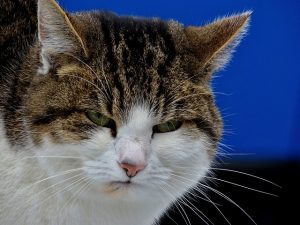
Graduate School Statement of Purpose Examples: 4 Key Points
Graduate programs ask for statement of purpose to hear about your interests and goals and why you think you and the program would be a good fit.
There are four key elements to a successful statement of purpose:
- A clear articulation of your goals and interests
- Evidence of past experiences and success
- Interest and fit with the program
- Strong writing
We’ve provided you with four successful statement of purpose samples from our graduate school experts!
- Statement of Purpose Sample One: Japanese Studies MA
- Statement of Purpose Sample Two: Music MM
- Statement of Purpose Sample Three: Economics PhD
- Statement of Purpose Sample Four: History of the Book MA
We also provided additional statement of purpose samples (and a sample letter of intent) for graduate school from other sources on the internet. Now you have all kinds of guidance!
What’s Next?
If you’re looking for more information on graduate school, see our guide to what makes a good GPA for grad school.
Not sure if you need to take the GRE? See if you can get into graduate school without GRE scores.
Want more information about the GRE? We can help you figure out when to take the GRE, how to make a GRE study plan, and how to improve your GRE score.
Ready to improve your GRE score by 7 points?
We've written a eBook about the top 5 strategies you must be using to have a shot at improving your GRE score.
Download it for free now:

